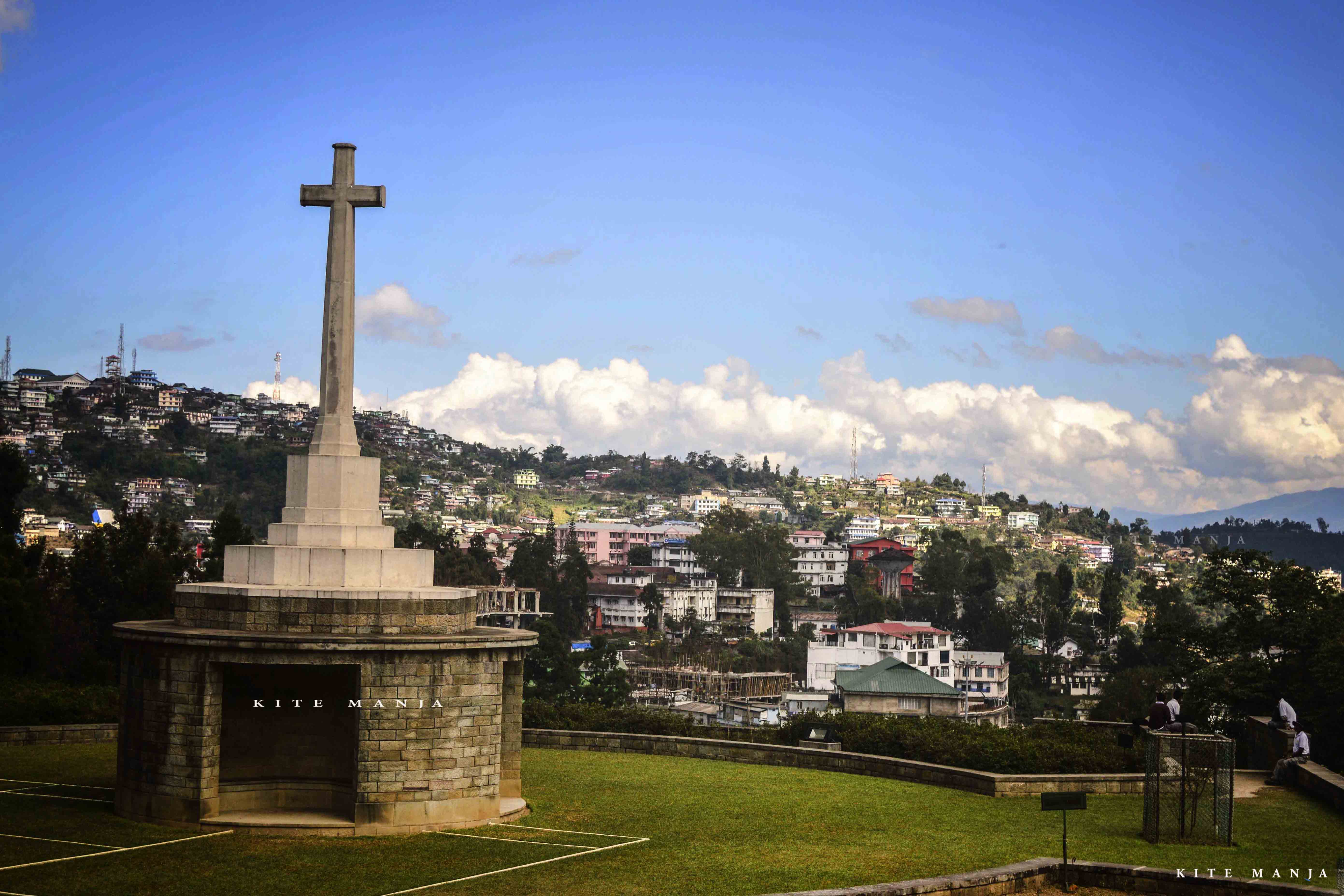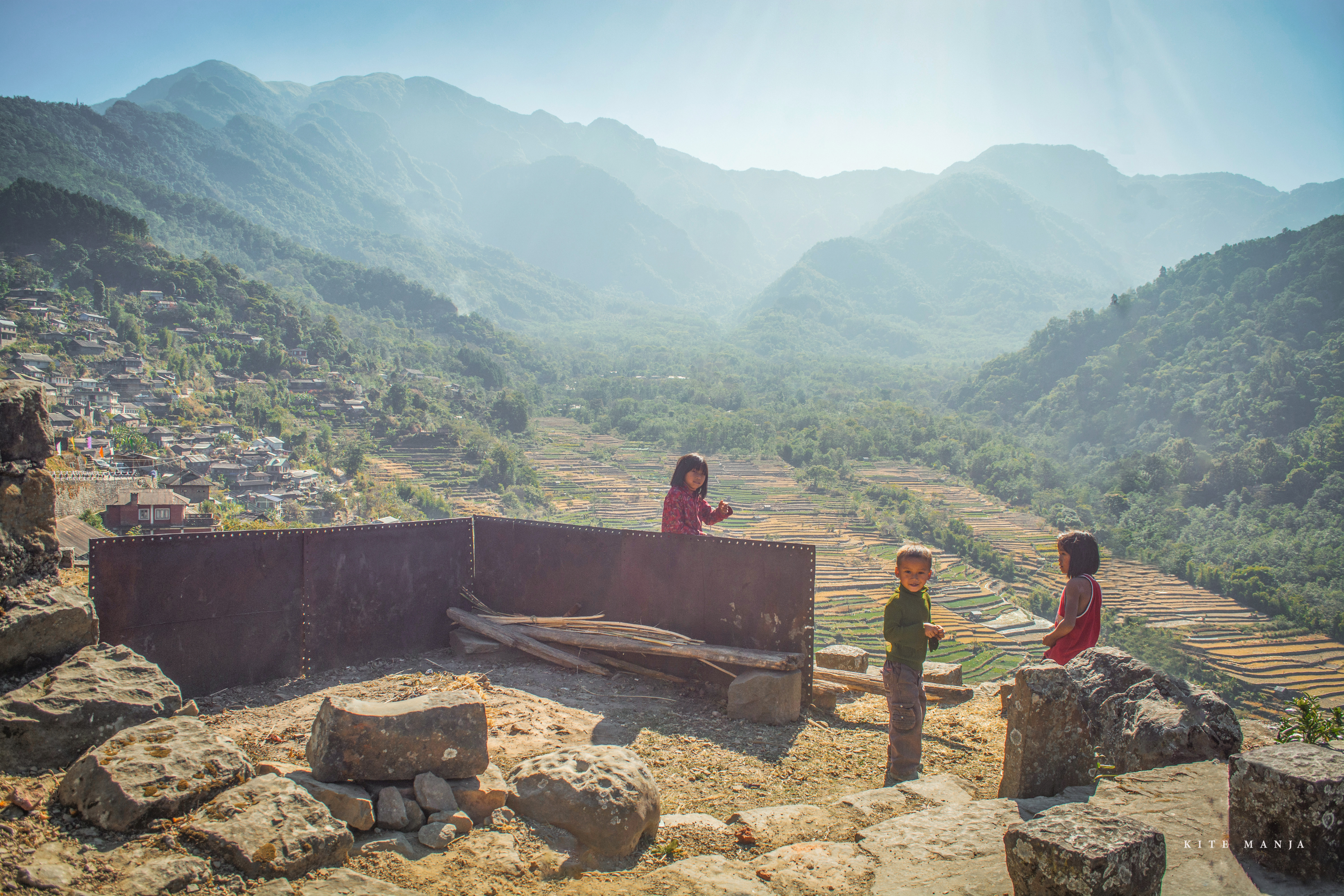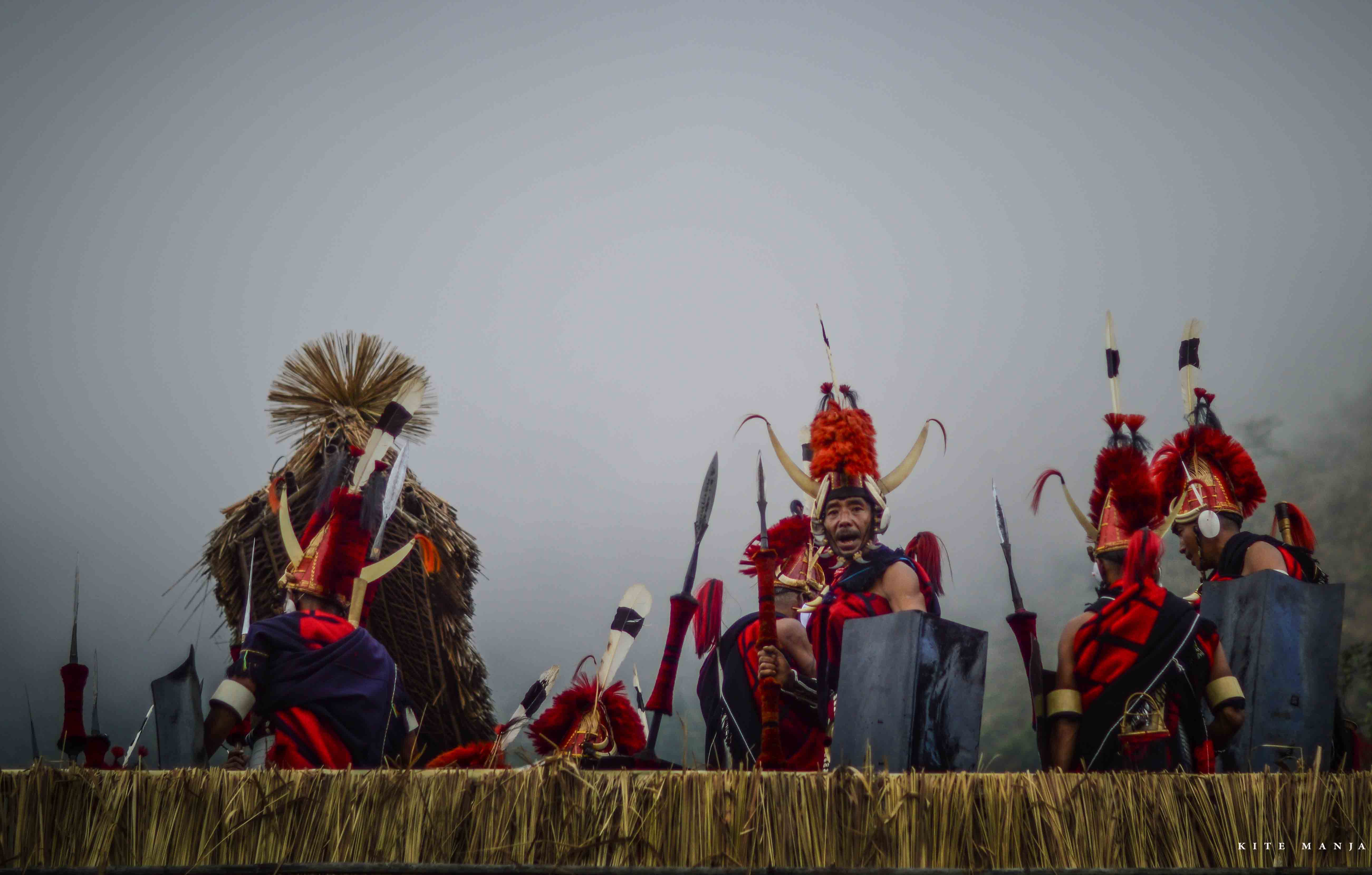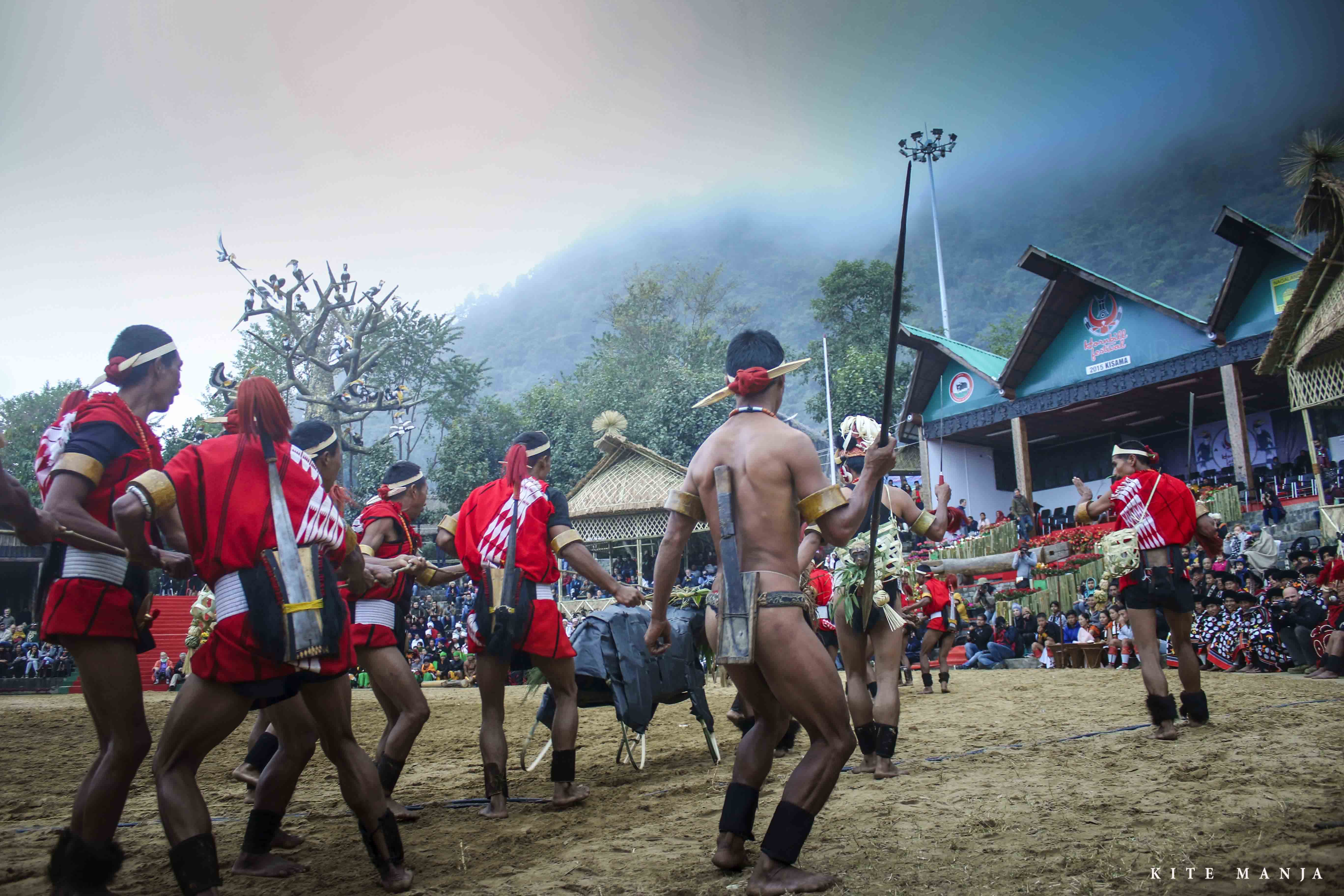It is tough for a first timer to plan a trip to Hornbill Festival without any proper guidance. Read our blog to get an exhaustive detail about traveling to Kohima to attend this grand festival. Get all your answers in just 10 minutes!
Nagaland has always intrigued travelers with its aboriginal tribes, colorful festivals, wondrous vistas, and a quirky cuisine. It is enveloped with mysteries and hearsay which makes it a must-visit destination for an intrepid traveler.
With 16 indigenous tribes inhabiting the Naga hills it can be an onerous task to travel everywhere at once. But every year in the first 10 days of December, all the tribes unite near Kohima to celebrate the annual Hornbill Festival. These 10 days in Kohima is your gateway to understanding the life and culture of the Nagas.
Reaching Kohima
Kohima is well connected by Road, Air, and Train. Nearest Airport and Railway station are at Dimapur which is at a distance of 70 km from the state capital. Regularly shared vehicles are available from Dimapur Railway Station/airport. Guwahati to Dimapur is connected by various trains and Shatabdi-12067 is the best option.
By road, it is 340 Km and around 8 hour’s journey from Guwahati. Daily overnight buses from Guwahati ISBT are available. Private vehicles on hire are available from Guwahati, Jorhat, Kaziranga National Park, and Dibrugarh.
About Kohima, Nagaland
Kohima is the capital of Nagaland and the land of the Angami Naga tribe. It is a buoyant hill city with warm and friendly people. The city is spread across forested hilltops and ridges and has many beautiful places nearby. This place was named ‘Kohima’ by the British because it was tough for them to pronounce the Angami word Kewhima or Kewhira. It is named after the wildflower plant Kewhi, found in the mountains of the Naga hills.
Kohima is a must visit place for a history buff. This city happened to be an epicenter of one of the fiercest battles of World War II – The Battle of Kohima. The British National Army Museum voted the battle of Kohima as “Britain’s Greatest Battle” to date.
During the Hornbill festival heritage walks and city tour is held to show places of historical importance. The night carnival at this time will let you explore the Kohima markets until late at night. Apart from it, motor rally, half marathon, World War II rally and Badminton tournament also take place in Kohima between 1st to 10th December.
How is the weather in Kohima in December?
Kohima has cool winters in the month of January. The maximum day temperature remains between 18°C to 20°C and at night it goes to 10°C. It is advised to pack a good warm jacket, woolen cap, warmers, and thick socks when you travel to Kohima for the Hornbill festival.
Day time is mostly sunny and nights are cold with fog and occasional rain. The temperature goes below 10°C if it rains for too long in winters. The temperature at the Hornbill Festival site is colder than the Kohima city in the evening. Carry good warm clothes while visiting the venue after 3 pm.
Important places to visit in and around Kohima
World War II Cemetery
Situated at the heart of the city is the Kohima cemetery. It is a war memorial dedicated to the 1420 fallen soldiers of the 2nd British Division of the Allied Forces and an additional 917 British Indian soldiers. It is set up at an exact place where the Battle of Kohima was fought and won by the Allied forces.
The cemetery offers a beautiful panoramic view of the city. It has two memorial crosses dedicated to the British Indian Army and 2nd British Division. The memorial cross for the second British division is famous for its world-famous epitaph titled as ‘Kohima Epitaph’ which reads,
“When you go home tell them of us and say for your tomorrow we gave our today”
Kohima Cathedral Church
It is one of the most beautiful churches in Nagaland and the main church of the diocese of Nagaland. It has an element of typical Naga architecture and the facade of the church resembles that of a Naga house. The 16 feet high wood carved crucifix at the cathedral is one of Asia’s largest crosses.
Interestingly, the construction of this church was mostly funded by the families of the Japanese soldiers who died in the Battle of Kohima during the Second World War.
Mao Market
Visit this place if you are interested to explore a traditional Naga market. Mao market is the largest local market in Kohima city located between the Bethel Hospital and the fire department. Local vegetable farmers and butchers from the nearby villages and hilltops ensemble here to sell their products. All the products at this market are farm fresh and grown locally.
You will find vegetables, local herbs, fermented bamboo shoots, king chilies, raw and dried fish, red meat like pork, beef and Mithun (a bovine species found in Northeast India), tadpoles, silkworms, and snails, etc.
Khonoma Village
Khonoma is a picturesque village situated 20 kilometers west of Kohima. It is a 700 years old village dotted with houses at one end and terraced paddy fields at the other. It is a land of the fierce Angami warriors who resisted the British rule in the region and inflicted many casualties on the British army from 1830 to 1880. After walking through the narrow alleys of this village, one will realize how this place embossed its name in the history of Indian resistance against the colonial rule.
Almost 20 sq.km area including the village is declared as the Khonoma Nature Conservation and Tragopan Sanctuary. Although hunting is an integral part of the Naga culture, it is completely banned in Khonoma. This has led to the conservation of an endangered Blyth’s Tragopan bird near the village along with other birds, animals, snakes, and amphibians.
Due to all this effort, Khonoma was declared as India’s first green village on 25th October 2005.
Kigwema Village
The quaint Kigwema is located at a distance of 16.5 kilometers from Kohima on the foothills of the Japfü peak. It is known to be the oldest inhabited Angami tribe village in Nagaland. It has some of the most amazing wooden houses with traditional carvings.
Kigwema means ‘Inheritance of a House’ and few believe that the actual settlers of this village relocated to Khonoma after losing a territorial war against another group of Angami warriors. Maybe this is why it’s called Kigwema because it got inherited by different families after its capture.
Kigwema village has a history with the Japanese army which goes back to World War II. The villagers gave shelter to General Saito and his forces while they were on their way to attack the British army in Kohima.
Viswema Tribal Museum
Viswema tribal museum is a new museum that was inaugurated in the Viswema Village on May 24, 2019. It takes about an hour to reach this place from Kohima city. This museum has a collection of dresses and materials worn and used during the olden days. This museum is conceived with a purpose to collect old accessories and dresses for preservation.
Naga Heritage Village
Naga Heritage Village is the venue for the annual Hornbill festival. It is located between Kohima and Kigwema and very close to Phesama village on the Imphal highway. It is a model heritage village with 16 Morungs (Youth dormitories) representing 16 Naga tribes.
The Heritage Complex also houses a World War II Museum, Chapel, Bamboo Heritage Hall, Bamboo Pavilion, Horti-Scape, Food Courts and Amphitheatre for live concerts and events, etc.
Kohima War Museum
This museum is located inside the Naga Heritage Village, Kisama. The museum exhibits war memorabilia from the World War II battles which were fought in and around Kohima. It houses a diverse range of weaponry, soldiers’ uniforms, and historic photographs.
Nagaland State Museum
The state museum has a rare collection of clan motifs, necklaces, precious stones, inscriptions, and traditional attires. It demonstrates the rich culture and traditions of the 16 Naga tribes. The ancient statues, gateposts, pillars, and pieces of jewelry are some of the main attractions of this government state museum. It is opened six days a week from Tuesday to Sunday.
Why the Hornbill Festival is held?
Nagaland is an agrarian state and all the tribes celebrate their festivals with fervor and gaiety. Although every tribe has its own harvest festival there was no common festival among themselves. Hence in the year 2002, the government of Nagaland conceptualized the Hornbill Festival.
At a time of inception, it was a weeklong celebration to promote inter-tribal relationships and to boost tourism in the state. Gradually over the years, it started attracting lakhs of tourists in just seven days so the government of Nagaland declared it a 10 days mega event in 2013.
This festival reflects the spirit of unity amongst the Nagas and coincides with the Nagaland statehood day on 1st December. It is also known as the ‘Festival of Festivals’ because it brings all the Naga tribes under one roof to showcase their rich culture and traditions.
The festival has been named after a beautiful bird called Great Pied Hornbill. This bird is an integral part of folklore, songs, and legends of every Naga tribe so the name ‘Hornbill Festival’ was unanimously accepted by all 16 tribes.
Unfortunately, the Hornbill population has dwindled in the state due to the rampant hunting practices of the Nagas. Still, this bird has become synonymous with ‘Nagaland’ and made its presence felt across the globe due to this 10-day festival.
Where does it take place?
The Hornbill Festival is held on the foothills of the Japfü peak at the Naga Heritage Village, Kisama. It is about 10 kilometers from the Kohima city on the national highway 39, the Imphal highway. Interestingly the word ‘Kisama” has been derived from the names of the two adjoining villages called ‘Phesama’ & ‘Kigwema’. So the first two letters ‘KI’ is derived from Kigwema, ‘SA’ comes from Phesama and ‘MA’ means a village.
What happens at the Hornbill Festival?
Hornbill festival is jointly organized by the state Tourism and Art & Culture departments promoting the cultural ethos of the state. Mélange of startling events like folk dances, indigenous sports, choir competition, modern music shows, fashion show, kid’s carnival, horticulture, and floral exhibition, a film festival, Naga chef and photography exhibition, etc. are held inside the Naga Heritage Village.
Inside the heritage village, the amphitheater, craft shops and the ‘morungs’ remains crowded almost all the time. The dance performances and musical events take place at the amphitheater whereas a ‘Morung’ is a real-size replica of a bachelor’s dormitory of all the 16 tribes. Every Morung is different from each other reflecting a distinct architectural style. Visit the morungs to interact with the Nagas and to know more about their warrior lifestyle and food habits. Do place an order to try some authentic tribal cuisine and rice beer inside these morungs.
The craft shop area is known as ‘Bamboo Pavilion’ where artisans from nearby villages and towns sell their crafts and textiles. Naga shawls, scarves, waistcoat, bags, Dao (traditional machete), Japanese Katana, earrings, necklaces, Hornbill keyrings, and fresh honey are few things which you can buy from the shops.
There are also a lot of events happening away from Kohima and the Naga Heritage village during the Hornbill festival. For instance, the International Loin Loom Festival and the Hornbill Rock contest in Dimapur, the Hornbill Motorcycle meet hosted by the Nagaland Motorcycle Club and trekking events are held at different places. http://tourismnagaland.com/?page_id=1225 Click on the link to get an idea of the schedule of programs during the Hornbill Festival.
Where can I stay during the Hornbill Festival?
The Hornbill festival draws a lot of people to Kohima city. There are many homestays, lodges, guest houses and hotels available in the city. However, almost all the good accommodations are booked by August itself so you must book it way in advance.
De Oriental Grand Hotel and Razhü Pru are two of the best places to stay in the capital but an advance booking is a must thing. For anything between Rs. 3000 to 4000 per night for a double you can stay at the Hotel Blue Bayou, East Gate or the Central Guest House. For a budget stay, Morung Lodge is a good option and has rooms and dorms available at a very reasonable price.
There are also homestays near to Naga Heritage Village at Kigwema. Staying at the homestays in Kigwema will let you avoid the traffic congestion on the Kohima – Kisama route. A visitor will get more time to enjoy the festival!
For an alternative stay option, “Kite Manja provides the only campsite inside the festival gate, just 100 meters from the main festival arena.” says Sharell Cook in her blog www.tripsavvy.com.
Camp KITE MANJA – For Camping at the Hornbill Festival
Our campsite, Camp KITE MANJA is located just behind the Nagaland Police outpost at Kisama. It is a multi-tiered campsite with wild apple and cherry blossom trees. Two men, four men, and alpine tents are available for the travelers on a sharing basis. It is best suited for those who want to stay close to the festival, enjoy camping in the open air and prefer local cuisine. On top of that, the KITE MANJA team makes camping a delightful experience.
The camp is operational from November 30 to December 10. Camping charges are minimal at just Rs. 1750/- per night including breakfast and dinner and Rs. 1500/- per night with only breakfast.
Facilities offered at the campsite is a tent with a sleeping bag/blanket, all-weather mat, meals, boiled drinking water, common charging point, lobby, bonfire, hot water for the bath, make-shift eco-friendly toilets, first-aid kit, etc.
Additional activities which we offer to our guests during the Hornbill festival are,
- Nature and cultural photography workshop.
- Dzükou Valley trek (night stay can be arranged).
- Day trek to Japfü Peak.
- World’s tallest Rhododendron tree trek.
- Naga Village Visits.
- Kohima local sightseeing.
3 Nights 4 Days Short Itinerary to visit the Hornbill Festival
Follow our 3 nights and 4 days’ short itinerary to visit Kohima at the time of the Hornbill festival. This is a camping itinerary based upon accommodation in Camp KITE MANJA inside the Naga Heritage Village, Kisama. The same itinerary can be adapted with a stay in a hotel or homestay.
Day 1 – Dimapur to Kohima
Arrive at Dimapur airport or railway station and take a shared cab to Kohima. You will be dropped near NST (Nagaland State Transport Depot) and from here take another shared taxi to Naga Heritage Village. Check in at Camp KITE MANJA, get familiar with the place and later visit the festival. Overnight in a tent.
*During the festival season, taxis charge more than usual. Taxi fare from Dimapur to Kohima will be between Rs. 300 to Rs. 500 per person at this time. From Kohima to Kisama, it will be between Rs. 250 to Rs. 400 per person. You can even hire a whole car to reach the heritage Village. It will cost somewhere between Rs. 2500 to Rs. 3000 do not hesitate to bargain for a good deal or contact us for a carefree trip.
Day 2 – Hornbill Festival
After breakfast at the camp get ready to spend your day with the Nagas. Walk to the venue to watch the tribal dance performances and other cultural events at the amphitheater, visit the morungs, buy souvenirs from the craft-shops and drink rice beer. Come back in evening and rest by the bonfire. Overnight in a tent.
Day 3 – Kohima City sightseeing and Khonoma Village
Today after an early breakfast go to Kohima city to visit the World War II Cemetery, Kohima Cathedral Church, and the Nagaland State Museum. You can also add Mao Market on your list if you like going to local markets at any new destination.
After visiting these important places in Kohima head towards the Khonoma village. It is an old village of the Angami tribe and has a historical significance. It is also the first green village in India. While on your way back to Kisama, halt at Kohima to visit the ‘Hornbill Night Carnival’. Come back to the campsite before dinner time. Overnight in a tent.
*Taxi and guide for the full day Kohima – Khonoma trip can be arranged if informed in advance.
Day 4 – Kohima to Dimapur
After breakfast, start your return journey to Dimapur. End of our services!
If you have more time and want to add few more destinations with Kohima than contact us at info@kitemanja.com or call Rahul at +91 (837) 588-5235 for a bespoke Hornbill Festival itinerary.
Trekking Destinations near Kohima
The hills near Kohima city has many trekking trails for the adventure lovers and thrill seekers. Some of them are easy and some are moderate to difficult. Below are the details about the three rugged trekking destinations near Kohima.
Dzükou Valley
Dzükou valley ranks under the top 3 destinations in Northeast India for adventure seekers. This garden of Eden is around the year destination and can be visited in any season. But the best time to trek Dzükou Valley is during the monsoon because the temperature remains moderate at this time. Also, in the rainy season, the endemic Dzükou lily carpets the surface and turns the rolling hills into a valley of flowers. In December, Dzükou experience a frozen sub-zero temperature.
It is an easy to moderate trek and takes about 4 hours to reach the summit. There are two well-marked trekking routes for Dzükou Valley, one can start from either Viswema or Jakhama village. Distance from Jakhama to the summit is less but it takes more time because of the difficult terrain. The trail from Viswema is long but it can be covered quickly. The most difficult part is to climb the steep stairs for the first one and half hours later the trek turns into a cake walk.
Camping is allowed only at the base camp and it also has dormitories and few private rooms for travelers. The place is a community run space so do not expect any luxury.
Click on the link to see seven alluring images of Dzükou Valley – http://blog.kitemanja.com/top-seven-images-of-dzukou-valley/
Japfü Peak
It is the second highest peak of Nagaland and a moderate trek for an experienced trekker. The trail starts from Kigwema and leads to a quiet steep forest. It is a gradual ascent and considered as a birder’s paradise. Most part of the trail passes through a dense forest without any view. It finally opens up at the last hundred meters and provides an astonishing view of the valleys, hills, and villages.
Using a guide’s service is highly recommended and also carry packed food and water while trekking Japfu peak.
World’s tallest Rhododendron Tree Trek
Halfway to the Japfü peak lies the tallest Rhododendron tree in the world. It was discovered in the year 1993 by a local hunter from the nearby village. It is confined inside a thick forest cover so one will definitely require a guide to reach this place. Usually, an average Rhododendron tree grows till 6 to 10 feet but this tree was 108 feet long when it was first measured in 1993 and it is still growing.
It is a moderate to hard trek with a steep ascent of around five hours.
Travel Tips for the Hornbill Festival
Based on our own experiences below are some travel tips for visiting the Hornbill Festival.
- Indians don’t need to worry about the Inner Line Permit; it is exempted during the festival. Even Foreigners don’t require any permit but they will have to register their name at the Foreigner’s Registration Office (District Superintendent of Police) within 24 hours of entry in Nagaland.
- Book accommodation in advance.
- Stay close to the venue to avoid traffic congestion.
- Carry any prescribed medicines.
- Bring warm clothes. It gets windy and cold from the afternoon.
- There is an Information Centre next to the amphitheater which provides brochures bearing the festival schedule.
- Visit each and every morungs and take out time to talk to different tribesmen to understand their way of living.
- Respect their beliefs, culture, and faith.
- There will be only one mobile ATM inside the heritage village so it will remain overcrowded almost all the time. Hence carry enough cash beforehand.
- Photographers are advised to reach early at the amphitheater to find the best spot to sit and photograph.
- Carry extra battery and a power bank for your camera and mobile phone.
- Tourist police will be everywhere in Kohima city and inside the heritage village. Take their help if needed.
- Nagaland is a dry state so bring your own booze or drink only rice beer.
- Vegetarians do not worry! There are places inside the venue where vegetarian dishes are available.
- Try to bargain at the craft-shops to strike the best deal.
Almost every possible information to plan and execute a trip to Kohima in December is furnished in the blog. For more details regarding traveling in Nagaland or booking a tent at our campsite in Hornbill Festival, write at rahul@kitemanja.com.











